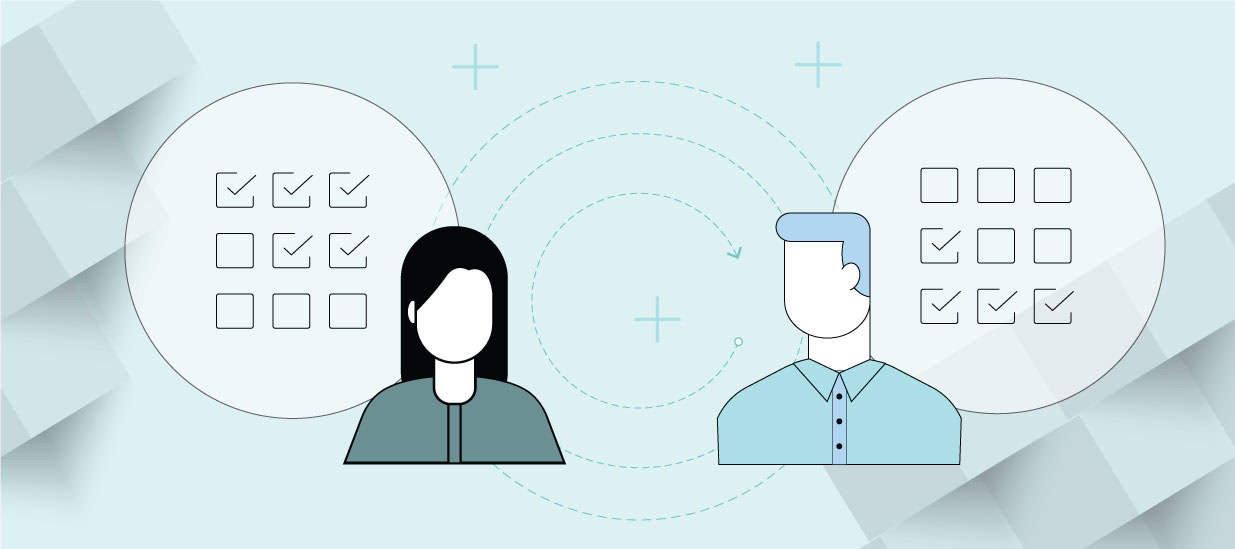6 minute read
This article dives into the crucial role of product messaging in defining customer perceptions, highlighting strategies for impactful and distinct communication.
One of your primary responsibilities as a product manager is to own how your product is perceived. And unless you actively define what your product stands for, customers will assign their own meaning to it. Or worse, they will allow your competition to shape their perception of what your product is and is not.
But if product messaging is so important, why does this happen? Unfortunately, in the rush to launch on time, product teams often spend virtually all their time on product development. Downstream planning becomes an afterthought, executed as a checkbox exercise that happens just before, or even after, launch.
In this situation, it’s little wonder that product messaging is often inconsistent, confusing, contradictory, or just plain wrong. Simply put, your words matter. And whether customers perceive a product as good, rather than great, is often the result of product messaging. But as with most things that are important and impactful, product messaging isn’t simple.
Developing the right messaging requires significant effort and resources. It is not simply jotting down the top three to five features and expecting your marketing department to own it from there. Yet, this happens all too frequently. You must avoid focusing solely on your product’s functionality. Instead, ensure your product messaging is tailored to your audience’s key needs, distinguishes your product from competitors, and emphasizes business benefits.
Although there is no single universally accepted format for product messaging, there are best practices that should guide you.
Here are some starting guidelines for how to improve your product messaging on your next product launch.
Tailor Your Product Messaging
It should go without saying that all product messaging needs to target your audience. The trick is knowing who your audience is and what their needs are. “But I know who my audience is,” you say. Perhaps you are correct. Chances are, you spent a fair amount of time talking to them as you developed your product. But the real question is, do you know who the decision-makers are?
It’s tempting to focus on end users because they are the people you’ve been building the product for. As a consequence, messaging often becomes feature-centric, with too much emphasis on the details of specific functionality. But beware. Often, buyers and users are two entirely different sets of people and their underlying buying motivations can differ drastically.
For instance, consider the buying criteria of the corporate procurement department vs. the criteria of your users. One will focus on cost, while the other will be biased toward usability. To complicate matters, myriad additional stakeholders may be involved as well, including IT, compliance, and so forth. You cannot—and should not—try to develop messaging for all of these diverse groups at once. You must identify the right decision-making audience and tailor your product messaging to their needs.
Identify Differentiation Points
How well does your product stand out in the market? Does your product messaging make it easy for consumers to differentiate you from the competition? This can be hard to determine because you are too familiar and biased. However, this is a great litmus test for determining message differentiation: Remove all names, brands, and logos from your competition’s marketing collateral and from your own. Can you easily tell who is who?
The results of this exercise might surprise you! But, if you can’t easily tell the difference between your messaging and your competitors, how can you expect your customers to? When buyers see similar language on multiple, competing presentations or websites, they assume each product is the same. In this situation, they make their buying decision based on the lowest price. For this reason, competitive differentiation is of the utmost importance.
Differentiating your offering by crafting a unique product message is challenging since you can’t control competitors’ narratives. Start by pinpointing three distinct differentiation factors. While the instinct may lean towards highlighting product features, remember that customers often consider more comprehensive factors. Decision-makers frequently prioritize aspects beyond just functionality, therefore, it’s crucial to broaden your focus.
The following elements can all contribute to making your product messaging stand out:
- Vendor reputation
- Financial stability
- Compliance history
- Peer network size
- Exclusive data sets
- Total cost of ownership
Learn more about how to pinpoint what makes your product distinctive.
Focus on Business Benefits
For product teams who spend a lot of time developing new products, it can be difficult to accept that prospective buyers rarely make purchasing decisions based on features. How can this be? After all, they constantly ask about it during demos, on RFPs, and at presentations, so it is easy to assume that functionality is their primary concern.
The reality is far more complex. What they are doing is vetting that your product meets their basic functional needs. However, this is only one aspect of a far more heterogeneous buying decision—one that is influenced by a multitude of different, and sometimes competing, factors. Product-centric messaging, therefore, will likely miss the mark. Instead, focus the message on business benefits. How will your solution move the prospect’s business forward? What is the ROI? Will it lower costs or drive revenue? Will it enable compliance? The point is to focus on the business outcome your buyer can expect.
Note that the focus on business outcomes applies even if your target audience is technology buyers. The IT department does not purchase technology for the sake of owning technology; there is an underlying business motivation that compels it to seek a solution. This might be protecting the company, cost control, supporting the business, or similar business needs.
Getting your Product Messaging Right
Another common challenge is when to develop your product messaging. A key mistake is to defer thinking about messaging until late into product development. At this point, however, you are typically consumed with meeting launch deadlines and can’t dedicate the necessary time to get it right. In reality, the product messaging conversation should happen much earlier. If you know you are going to build something and you know what problem it solves, you are ready to think about the messaging.
Getting it right also means that you need to convene a team of experts who understand your market and customers. This process usually involves assembling a team of sales, solutions consultants, marketing, services, and strategy professionals, along with anyone else who has a strong perspective on the market. The goal is to engage in a comprehensive, multi-day discussion to share insights and strategies.
Rather than starting the conversation with your product, focus on understanding the external factors: the market landscape, your customers’ current and evolving needs, the competitive situation, and any other tangential business drivers that may impact your customers’ lives. Once you have a holistic understanding, you can begin to map your product capabilities against customer business needs and outcomes. Remember, to focus on establishing competitive differentiation during these discussions.
The next step is to road-test your product messaging externally. This can be done using a paid market research study or a set of close and trusted partners. Often, you’ll find that third parties have a different perspective that you have not fully considered. As your sales team rolls out the new messaging to select or beta clients, be sure you have a seat at the table so that you can understand how customers react.
You must be prepared to continue to refine your product messaging in the early phases as you gather feedback. During this period, you’re learning how consumers feel and react to your product and can utilize their insight to improve your messaging. This is why it is important to develop your messaging well in advance of the full product launch.
Learn more about product positioning and how it can help you communicate your product’s unique value.
Own the Product Message
Product message development is not a quick, ad hoc exercise; it requires a more dedicated and structured approach. Few individuals have a greater stake in getting your product to succeed than you do. Assigning meaning to your product is too important to be left to the whim of others. Your partners in marketing and sales can help shape the message, but ultimately, the product team must own this vital aspect of the product, just as you own the roadmap.
Crafting effective product messaging is pivotal in standing out in a crowded marketplace and truly connecting with your audience. By focusing on differentiation, customer benefits, and strategic communication, businesses can significantly enhance their brand perception and drive meaningful engagement.
Author
-

Abdul Rastagar, an expert with 18 years in go-to-market and marketing strategy, has honed his skills at Oracle, Veeva Systems, Benchling, and Lexitas Pharma Services. A leader in marketing, strategy, demand generation, and product marketing, Abdul brings a wealth of experience to his roles. For questions or inquiries, please contact [email protected].
View all posts








